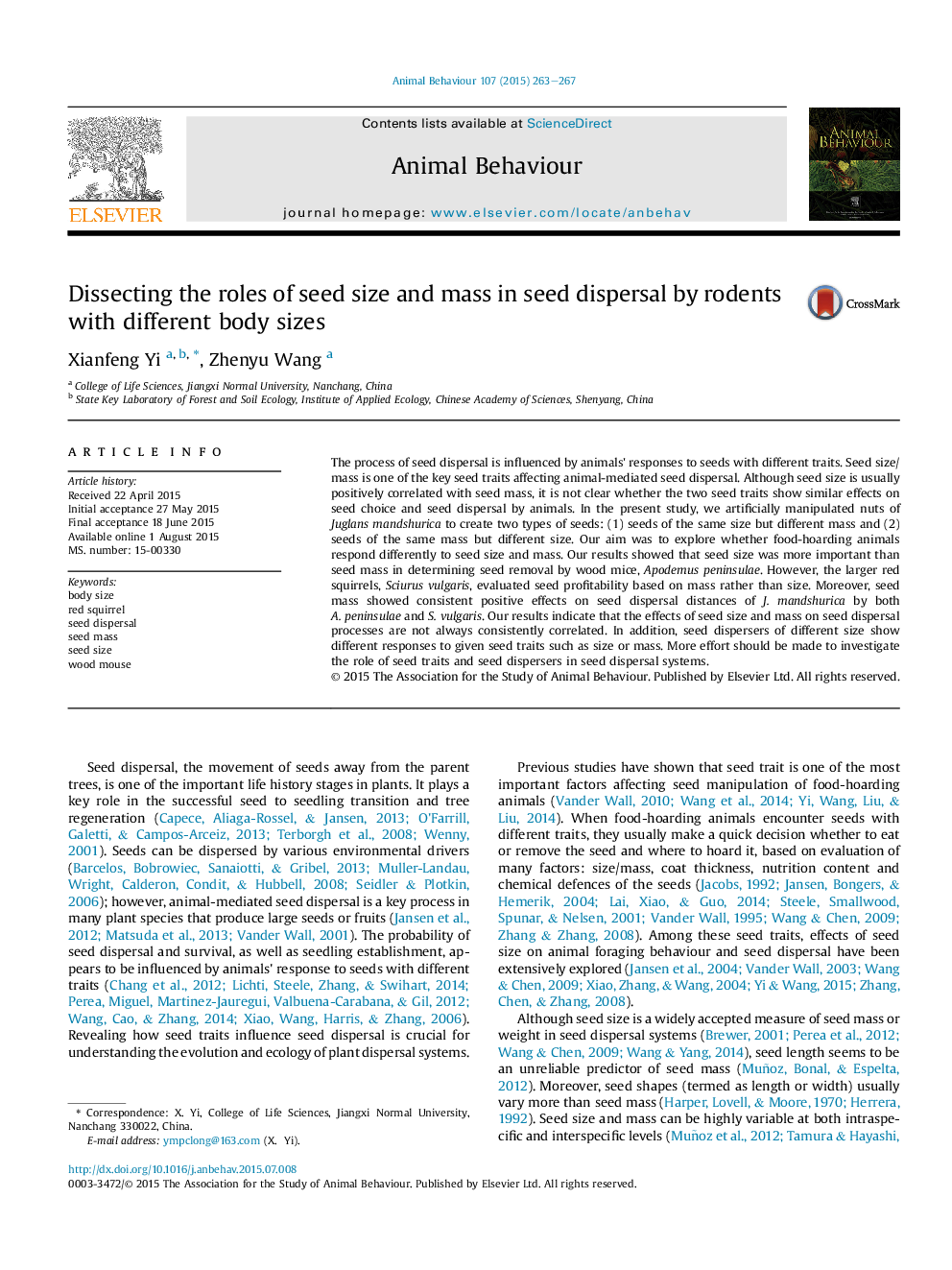| Article ID | Journal | Published Year | Pages | File Type |
|---|---|---|---|---|
| 8489782 | Animal Behaviour | 2015 | 5 Pages |
Abstract
The process of seed dispersal is influenced by animals' responses to seeds with different traits. Seed size/mass is one of the key seed traits affecting animal-mediated seed dispersal. Although seed size is usually positively correlated with seed mass, it is not clear whether the two seed traits show similar effects on seed choice and seed dispersal by animals. In the present study, we artificially manipulated nuts of Juglans mandshurica to create two types of seeds: (1) seeds of the same size but different mass and (2) seeds of the same mass but different size. Our aim was to explore whether food-hoarding animals respond differently to seed size and mass. Our results showed that seed size was more important than seed mass in determining seed removal by wood mice, Apodemus peninsulae. However, the larger red squirrels, Sciurus vulgaris, evaluated seed profitability based on mass rather than size. Moreover, seed mass showed consistent positive effects on seed dispersal distances of J. mandshurica by both A. peninsulae and S. vulgaris. Our results indicate that the effects of seed size and mass on seed dispersal processes are not always consistently correlated. In addition, seed dispersers of different size show different responses to given seed traits such as size or mass. More effort should be made to investigate the role of seed traits and seed dispersers in seed dispersal systems.
Related Topics
Life Sciences
Agricultural and Biological Sciences
Animal Science and Zoology
Authors
Xianfeng Yi, Zhenyu Wang,
